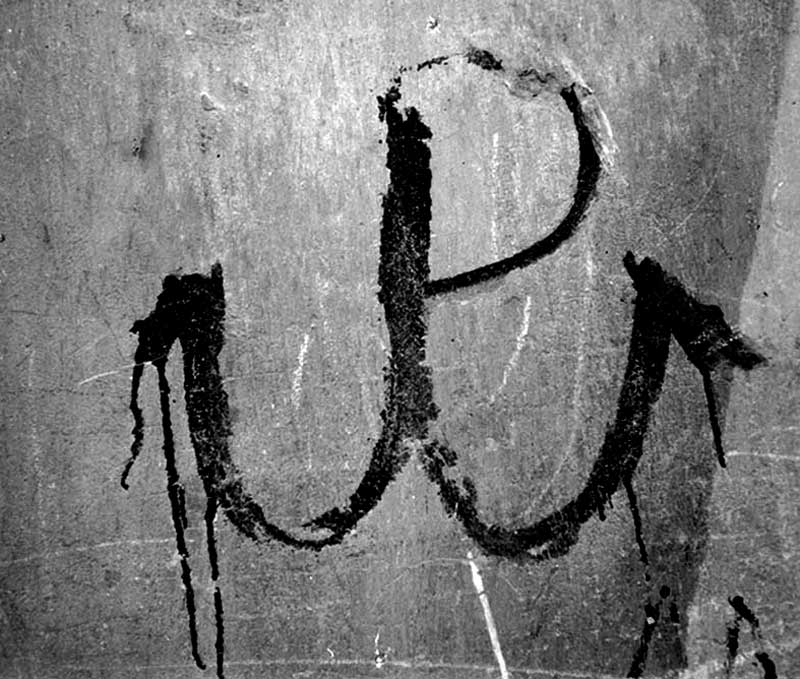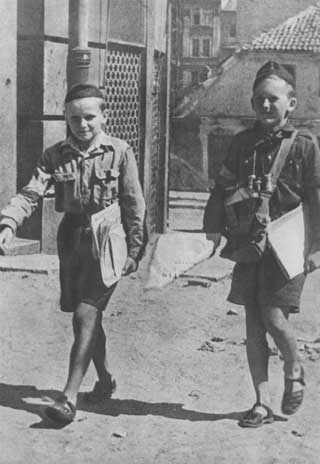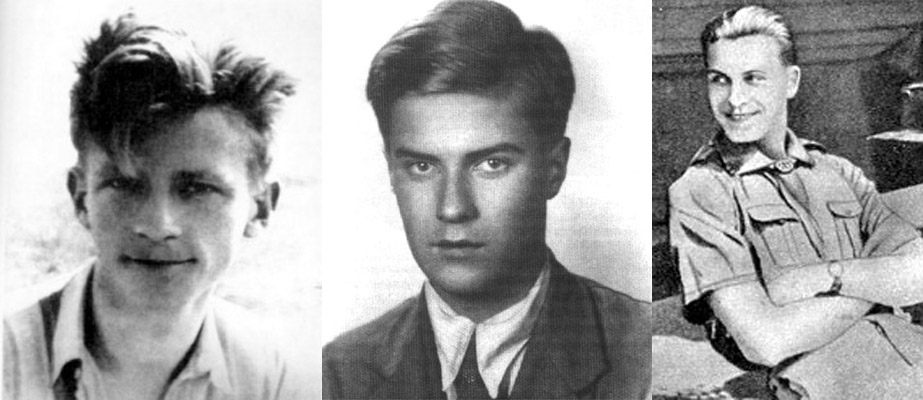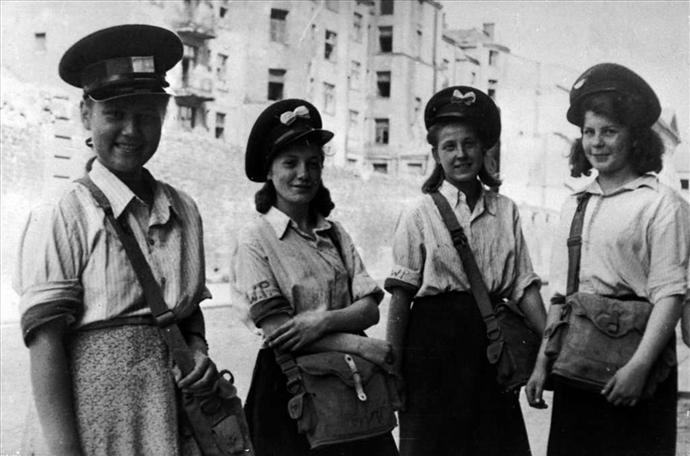While Germany occupied Poland from 1939-1945, a critical youth movement went underground along with the Polish Home army. The Polish Scouts, which had been founded in the early 20th century, became the Szare Szeregi, or Gray Ranks, training the next generation of soldiers and citizens. Above: Girl Scouts 1926.
It is my sincere wish to serve God and Poland with the whole of my life, to carry my willing help to others, and to obey the Scout and Guide Law.
Dziś—Jutro—Pojutrze (Today—Tomorrow—And The Next Day)
The Nazis tried to ban scouting in Poland, rightly judging it as patriotic and a source of national pride. But the Szare Szeregi, meeting secretly throughout the German occupation, became part of the struggle for a free post-war Poland.
During the war, the Szare Szeregi pledge was updated to reflect their new role as part of the Polish resistance: “I pledge to you that I shall serve with the Grey Ranks, safeguard the secrets of the organization, obey orders, and not hesitate to sacrifice my life.”
Above is the symbol of the Polish Uprising, an anchor made of a P and W, standing for Polska Walcząca, “a fighting Poland.” It was designed by scout Anna Smoleńska.
Above are two battlefield mail carriers.
While younger scouts attended secret schools (an effort to educate the future leaders of a liberated Poland), older scouts attended combat training, distributed anti-German propaganda, and painted pro-Polish graffiti. Teens over seventeen were engaged in battles in the Warsaw streets during the Uprising of 1944, when Poles waged a three-month struggle against their occupiers. The scouts even ran a citywide mail service during the fighting to keep citizens in contact with each other.
During “Operation Arsenal” boy scouts stormed a van carrying prisoners (including troop leader Jan Bytnar) to Gestapo Headquarters. The scouts managed to free all 25 prisoners. Days later Bytner was killed by Nazis after being tortured for information. His torturers were found and assassinated by the Gray Ranks.
Kamienie na szaniec (Stones on the Barricade) is the most famous book about the Gray Ranks, chronicling and fictionalizing the real lives of Jan Bytnar, as wells as Tadeuz Zawadzki, and Maciej Aleksy Dawidowski who died in Operation Arsenal (all pictured above left to right) by using their code names: Rudy, Zośka, and Alek respectively.
Girl scouts fought alongside the boys and worked as nurses, cooks, seamstresses, and in communications. They managed orphanages, taught children, and attended secret medical courses.
After World War II ended, scouting became a peaceful pursuit again. However, Poland came under Russian influence, and there was pressure for young people to join the Young Pioneers, a communist youth organization, instead. In the Pioneers oath God was replaced with Lenin.
While scouting organizations went through changes and difficult times during these eras of turbulence, the pastime still remains popular with young people today—in the free Poland that the Szare Szeregi dreamed of, and fought for.
____
Teenage opens in Chicago, San Francisco, Berkeley, and Ft. Wayne on Friday. For more cities and dates click here.




